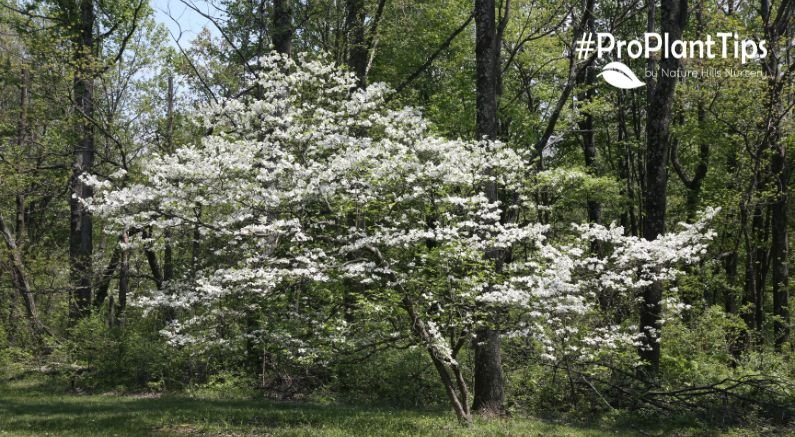Long before we Americans got to this continent, the Eastern dogwood (Cornus florida) was here, blooming every spring at woodland edges all over the eastern half of the United States. Descendants of those native dogwoods still put on a springtime show in yards, parks and even in our remaining forests. There have been threats over the centuries--from farmers clearing land for crops in the early days to suburban developments and the anthracnose fungus more recently--but the dogwoods soldier on.
When the average person sees a dogwood "flower", he or she is actually seeing four bracts or colored leaves, surrounding a center, which contains the actual flowers. It really doesn't matter whether you say "bracts" or "petals"--they are always beautiful. Fortunately for all of us, the Eastern dogwood has had some help from plant breeders, who have bred strains that are not only more resistant to anthracnose, but sport bigger flowers, more colorful leaves and a variety of growth habits.
One plantsman, the late Hubert Nicholson of Commercial Nursery in Decherd, Tennessee, introduced 'Cherokee Chief', an anthracnose-resistant variety with deep rose bracts. Another Tennessee-bred 'Cherokee' dogwood, 'Cherokee Princess' has the same healthy growth habit as its relative, but with large white blooms.
Those in warmer parts of the country may be especially interested in 'Princess', which flowers early. Of course, there are lots of beautiful dogwoods, some of which are native to the United States and some of which hail from Asia or Europe. There are also many lovely hybrids. But for the combination of hardiness, simplicity and beauty, it's hard to beat Cornus florida.

